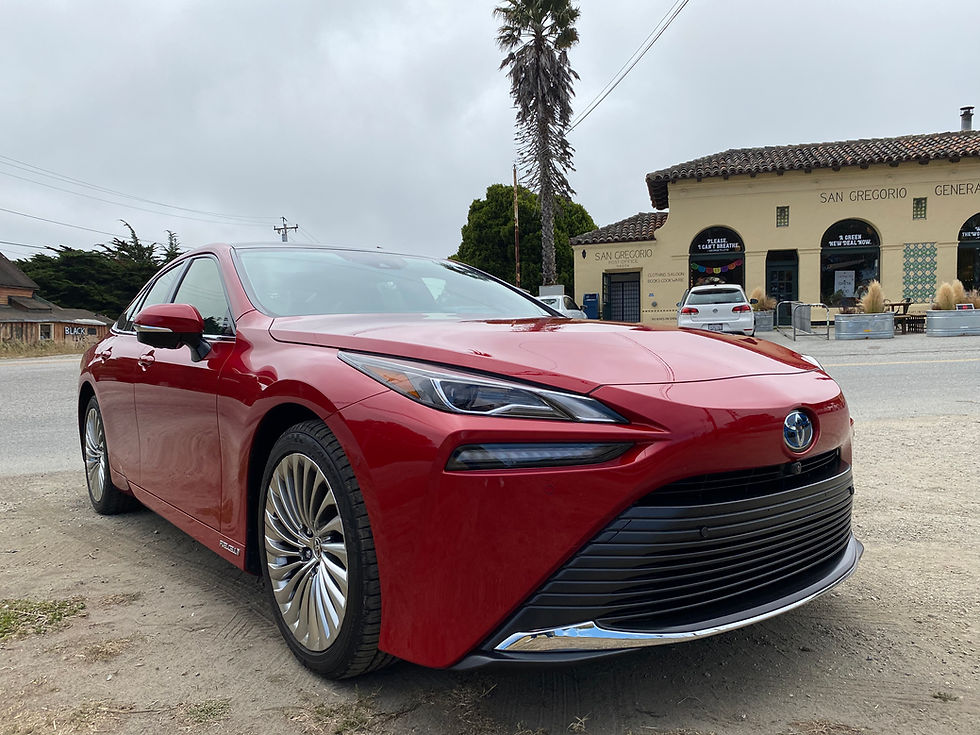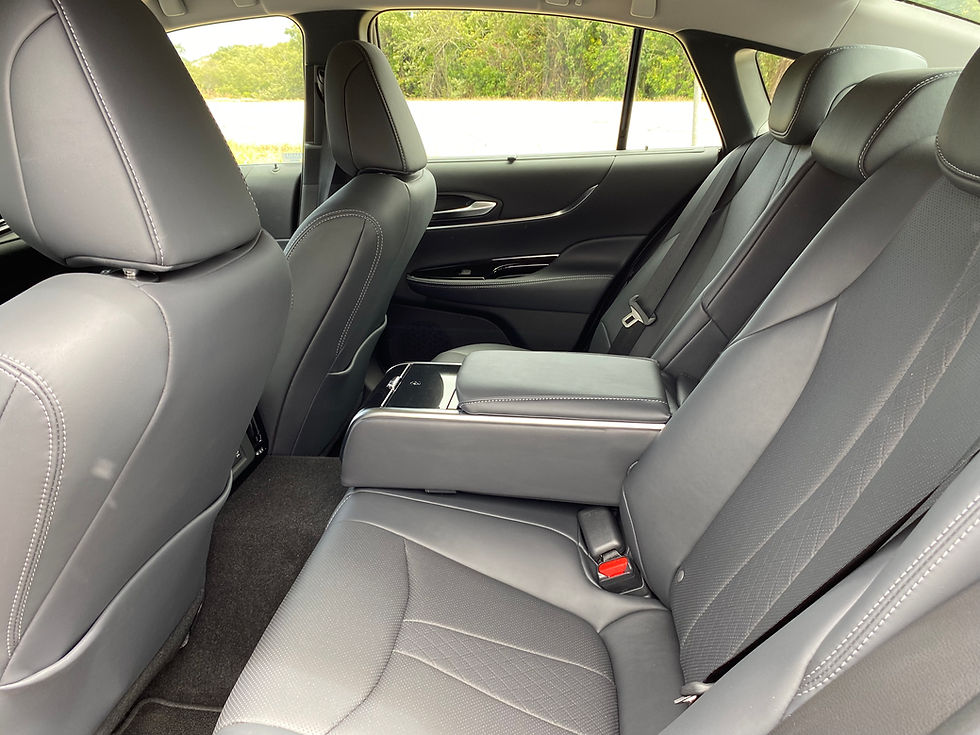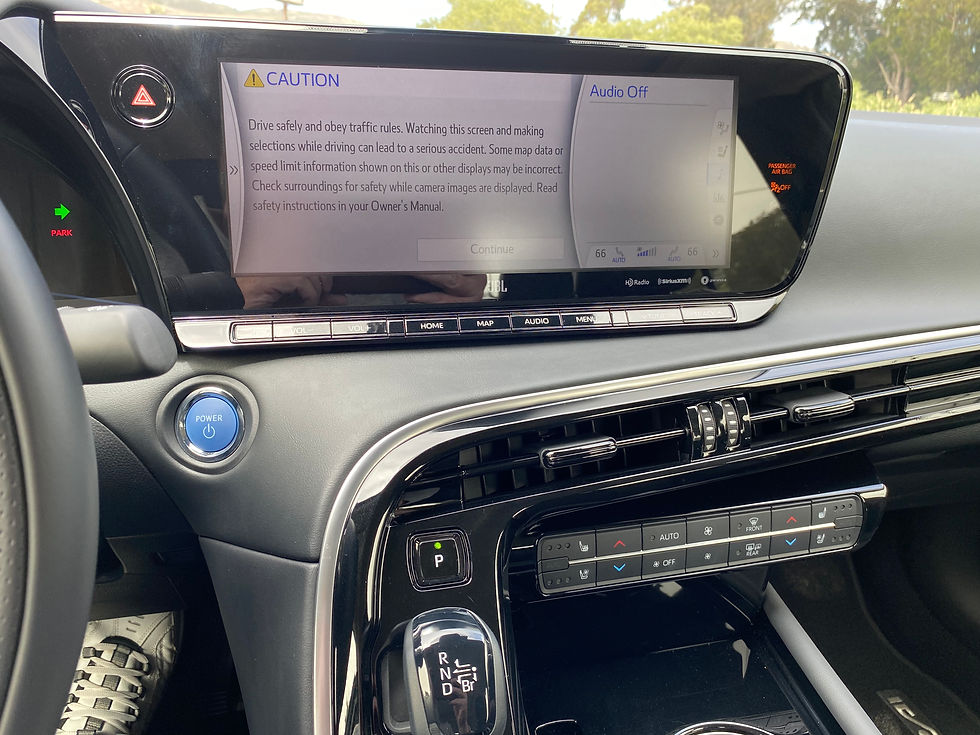30 Minutes With: The 2021 Toyota Mirai Limited
- Mike Hagerty
- Aug 13, 2021
- 3 min read
Updated: Apr 1, 2022

Publisher's note: Normally, the cars you read about here at MikeHagertyCars.com are loaned to us by the press fleets of the various manufacturers for several days. Seven is typical. Occasionally, we'll get a longer period of time, and sometimes it'll only be three or four days. Our "30 Minutes With" series features cars we spent half an hour driving during the just-concluded Western Automotive Journalists Media Day in Half Moon Bay, California.
Needless to say, these are quick drives and brief impressions that we hope to be able to flesh out with a full review of the vehicle at some point in the near future.

Media Days is a driving program, with journalists taking cars from the staging area at our host hotel, the Aristocrat, down Highway 1 to Highway 84, onto Stage Road (named for the former stagecoach stop still---but barely---standing on the corner), past the historic (since 1889), socially-aware and only-in-Northern-California funky San Gregorio General Store, through some marvelous twists and turns that lead back to Highway 1 and ultimately back to the hotel.

At the hotel, support teams from Page One Automotive and DriveShop sanitize the vehicles as they return while journalists choose their next vehicle from a total of 27 cars, trucks and SUVs provided by their manufacturers. This goes on for eight hours on day one, minus a 90-minute lunch break, and for three hours on day two. For me, that was enough time to drive 11 vehicles that I hadn't driven yet.

My fifth drive on day one was in the 2021 Toyota Mirai Limited. I have only driven a Mirai once before---at the 2017 WAJ Media Day in Monterey. The previous-generation Mirai was, to be charitable, a bizarre-looking beast. Imagine the current-generation Prius exposed to radiation, with a Prius-style interior.

The new 2021 Toyota Mirai looks like a Lexus. It's smooth and sleek.




"Mirai" is Japanese for "future", and Toyota's vision of the future has been hydrogen fuel cells. They are so invested in it, financially and emotionally, that they, the company that popularized the hybrid, have pretty much let the entire electric vehicle revolution pass them by.
Toyota is not alone among people and companies who believe fuel-cell is the better answer. It's a pretty simple and linear progression from internal combustion gasoline engines. Replace the gasoline with liquid hydrogen, mix the air from airflow and the hydrogen to create a chemical reaction that generates electricity, use that electricity to power the vehicle and replace the harmful emissions coming out of the tailpipe with water vapor. Bonus: No end-of-life recycling issues for massive battery packs powering an ever-greater number of EVs.
Toyota even gives buyers $15,000 or six years' worth of free liquid hydrogen fillups ($15,000 or three years for leases). And the Mirai is capable of some impressive fuel economy---the XLE model has an EPA estimate of 76 miles per gallon city/71 highway and the Limited 67 and 64, using the EPA's MPGe system of equating fuel cell-electric vehicles to gasoline standards.
The trouble is that you can build factories to make and recycle batteries. You have to re-do a ton of infrastructure to have liquid hydrogen at every---or even more than a few---gasoline stations all over the country. And thus far, that hasn't happened. The Mirai is only available in California, where there are 45 stations selling liquid hydrogen. Forty-five. In a state with forty million people. Which severely limits the Mirai's potential. Even if everyone in the state with an EV wanted to trade it for a Mirai tomorrow, the infrastructure isn't there to make that work.





And that's a shame, because the 2021 Toyota Mirai is a pretty desirable car. It's got slick looks, an interior that fits with the exterior styling and impeccable road manners. All of which is essential to the Mirai attaining whatever benchmark of success is possible, because it does not come cheap. The Mirai XLE starts at $49,500 and the Limited, which I drove, begins at $66,000.



The good news is that extra-cost options didn't push that price tag much higher. The Supersonic Red paint was $425 and the 20-inch Super Chrome ally wheels added $1,100.
So, with $995 delivery processing and handling fee, the as-tested price of the 2021 Toyota Mirai Limited is $68,540.



Yes, that is a lot of money for a Toyota sedan. But tax credits ease a lot of that bite. The feds will let you deduct $8,000 and California $4,500. So $12,500 comes off the ultimate bottom line of a Mirai purchase, meaning this particular car's real cost is $56,040. Factor in $15,000 of free hydrogen fill-ups over the course of six years and we're in loaded Camry territory. And the Mirai is a lot nicer than a loaded Camry.
Of course, 30 minutes and 20 miles aren't adequate for learning what the Mirai is like in day-to-day life, so we've booked a week in one. Expect a review here in mid-September.


